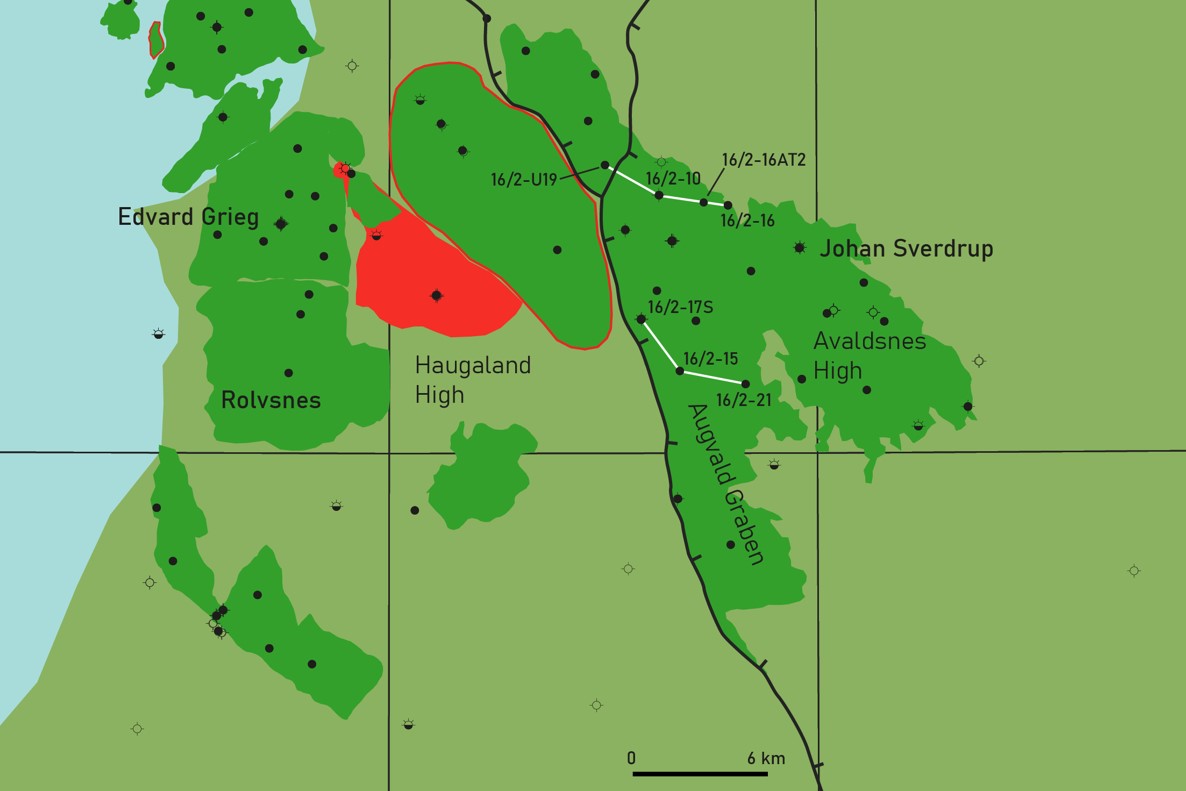It is probably the most important reservoir in the Norwegian offshore sector, but it is difficult to map using seismic data because of its limited thickness of 5 to 40 m: the Johan Sverdrup reservoir. Therefore, well-to-well correlation is an important tool to better understand its 3D depositional setting.
For his ongoing PhD project within the Suprabasins project at Aberdeen University, Jose Puig studied 25 wells and interpreted hundreds of metres of core from the Upper Jurassic reservoir.
This has resulted in the establishment of a high-resolution depositional framework, which also helps better predict where early water-breakthrough may occur.
A flooding history
When the Utsira High started to be transgressed in mid-Oxfordian times, which took place from east to west, a thin interval of mostly less than 1 m of alluvial to coastal plain sediments was deposited initially. This was followed by the deposition of fine-grained sands and muds in a protected and semi-restricted embayment.

The main part of the reservoir section is characterized by four different parasequences deposited in a shallow shelf environment with strong current circulation. This succession is in turn overlain by heterogeneous finer grained deposits with variable amounts of belemnites and septarian nodules indicating a transition to deeper water and sediment-starved conditions.
The four different parasequences mentioned above are characterised by a basal massive or cross-stratified medium to very coarse-grained sandstone interval grading upwards into a cross-stratified granule and pebble-dominated parasequence top.
Implications for drainage
This alternation of sand and gravel at parasequence scale generates petrophysical heterogeneity which have an impact on the efficiency of hydrocarbon recovery or fluid injection. Waterfronts and other types of fluid front will likely displace preferentially through the more permeable layers, ultimately producing early water breakthroughs and bypassed oil accumulations in the surrounding intervals.
Using the newly established basin scale stratigraphic model will help serve as a guide the best places for future well planning and optimize the efficiency of fluid extraction and injection operations.
HENK KOMBRINK





